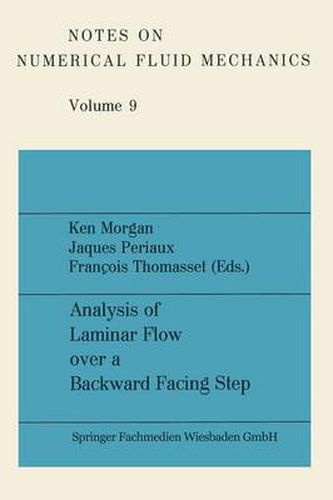Readings Newsletter
Become a Readings Member to make your shopping experience even easier.
Sign in or sign up for free!
You’re not far away from qualifying for FREE standard shipping within Australia
You’ve qualified for FREE standard shipping within Australia
The cart is loading…






This title is printed to order. This book may have been self-published. If so, we cannot guarantee the quality of the content. In the main most books will have gone through the editing process however some may not. We therefore suggest that you be aware of this before ordering this book. If in doubt check either the author or publisher’s details as we are unable to accept any returns unless they are faulty. Please contact us if you have any questions.
INTRODUCTION 1. - The problem for analysis and requirements 2. - Results 3. - Comparison of computer times 4. - Conclusion. INTRODUCTION In 1981 it appeared to the organizers that a workshop to compare codes to solve the Navier -Stokes equations would be of great interest to the community of numerical analysts and users working on CFD (Computer fluid Dynamics}. A test problem would have to be selected with the following features: 1. it should be suited for all known methods (finite differences, finite elements, spectral … ) thus the geometry should be simple. 2. it should be simple so that scientists with small computer facilities can test it and the gradients in the flow should be reasonable in size so that algo- rithms don’t blow up with a limited number of points and iterations. In practice one would have to select a stationary flow at moderate Reynolds number. 3. it should be a real flow to allow experimental asurements. The simplest problem used previously was the cavity flow problem; however the singularity of the data at the boundary (point A and B on figure 1} makes it difficult for the Finite Element and Spectral methods; furthermore it is not such an easy experiment to set up. A B …. u = 2 Flow around a cylinder, although most interesting of all, is too difficult because it is unbounded (many grid points) and very quickly unsteady {Re 30).
$9.00 standard shipping within Australia
FREE standard shipping within Australia for orders over $100.00
Express & International shipping calculated at checkout
This title is printed to order. This book may have been self-published. If so, we cannot guarantee the quality of the content. In the main most books will have gone through the editing process however some may not. We therefore suggest that you be aware of this before ordering this book. If in doubt check either the author or publisher’s details as we are unable to accept any returns unless they are faulty. Please contact us if you have any questions.
INTRODUCTION 1. - The problem for analysis and requirements 2. - Results 3. - Comparison of computer times 4. - Conclusion. INTRODUCTION In 1981 it appeared to the organizers that a workshop to compare codes to solve the Navier -Stokes equations would be of great interest to the community of numerical analysts and users working on CFD (Computer fluid Dynamics}. A test problem would have to be selected with the following features: 1. it should be suited for all known methods (finite differences, finite elements, spectral … ) thus the geometry should be simple. 2. it should be simple so that scientists with small computer facilities can test it and the gradients in the flow should be reasonable in size so that algo- rithms don’t blow up with a limited number of points and iterations. In practice one would have to select a stationary flow at moderate Reynolds number. 3. it should be a real flow to allow experimental asurements. The simplest problem used previously was the cavity flow problem; however the singularity of the data at the boundary (point A and B on figure 1} makes it difficult for the Finite Element and Spectral methods; furthermore it is not such an easy experiment to set up. A B …. u = 2 Flow around a cylinder, although most interesting of all, is too difficult because it is unbounded (many grid points) and very quickly unsteady {Re 30).